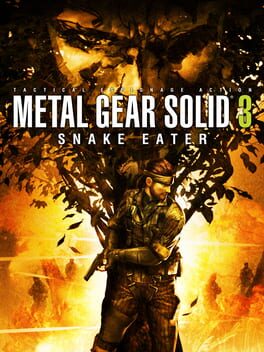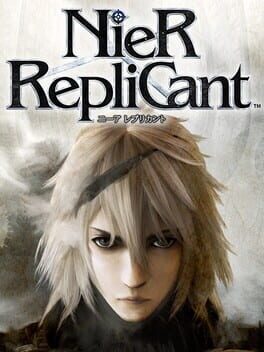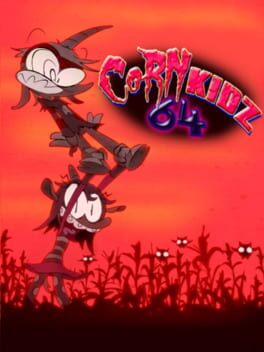The_Trash_Enby
Bio
I give ratings for original releases, so assume I've played the most up-to-date/best version (I usually have). I regard remakes that do not use original source code as distinct games.
For conciseness, I have excluded online flash games and mobile games. DLC is assumed part of the main game, and thus factors into the main game's score. Standalone DLCs are regarded as distinct. Whichever I prefer of a Pokémon pair gets the rating, enhanced versions are distinct.
My ratings trend positive. I'm uncomfortable giving scores to games I have not beat, and am less inclined to stick with games I am not enjoying.
Unlike for films and albums, a 5/5 game for me isn't necessarily perfect or near-perfect. Games are too long, complex, and interactive to sustain brilliance for their entire runtime. My ratings reflect an overall impression, so while Death Stranding has sloppy writing, and New Vegas runs in a poor engine, those games still achieve more than a vast majority of others.
I give ratings for original releases, so assume I've played the most up-to-date/best version (I usually have). I regard remakes that do not use original source code as distinct games.
For conciseness, I have excluded online flash games and mobile games. DLC is assumed part of the main game, and thus factors into the main game's score. Standalone DLCs are regarded as distinct. Whichever I prefer of a Pokémon pair gets the rating, enhanced versions are distinct.
My ratings trend positive. I'm uncomfortable giving scores to games I have not beat, and am less inclined to stick with games I am not enjoying.
Unlike for films and albums, a 5/5 game for me isn't necessarily perfect or near-perfect. Games are too long, complex, and interactive to sustain brilliance for their entire runtime. My ratings reflect an overall impression, so while Death Stranding has sloppy writing, and New Vegas runs in a poor engine, those games still achieve more than a vast majority of others.
Badges

Roadtrip
Voted for at least 3 features on the roadmap

Trend Setter
Gained 50+ followers

Pinged
Mentioned by another user

Adored
Gained 300+ total review likes

2 Years of Service
Being part of the Backloggd community for 2 years

Gone Gold
Received 5+ likes on a review while featured on the front page

Best Friends
Become mutual friends with at least 3 others

Organized
Created a list folder with 5+ lists

Donor
Liked 50+ reviews / lists

Well Written
Gained 10+ likes on a single review

Loved
Gained 100+ total review likes

Popular
Gained 15+ followers

Noticed
Gained 3+ followers

Liked
Gained 10+ total review likes

Gamer
Played 250+ games

N00b
Played 100+ games
Favorite Games
456
Total Games Played
015
Played in 2024
091
Games Backloggd
Recently Played See More
Recently Reviewed See More
What's astonishing about Pikmin 4 isn't just that it's probably the best one yet, but how, despite this, each prior game does something I like more. For as little as the core concept has changed, all four core Pikmin titles manage to stand out.
There's an obvious split in the types of Pikmin games, with 3 following up on the structure of 1 whilst 4 likewise builds on 2. 1 is rich in atmosphere and isolation, a fight for one person's survival. 3 is a cooperative fight for the survival of an entire planet which took a different tone, more focused on the beauty of the natural world and the wonderfully rendered fruits you collect.
2 and 4 are similarly alike in structure and unalike in tone. There's no overarching time limit in either, both make use of multifloored caves that are found in the typical Pikmin levels, and both focus on the collection of 'treasure'. Pikmin 2 used this structure to convey a darkly comedic capitalist satire and was thus appropriately brutal, unfair, and evil in some of its design. Pikmin 4 lacks this edge, and chooses instead to adapt Pikmin 2's structure to make a bonafide Pikmin bonanza.
Whatever style of game Pikmin is to you, Pikmin 4 is happy to accommodate. The core of the game is relatively stress-free, but by incorporating efficiency challenges usually reserved for separate game-modes into the main campaign, the more hardcore player will have plenty to appreciate too. But what if you prefer the macro-efficiency challenge of Pikmin 1 to these bite-sized chunks? Even that style gets its day in the sun here.
I'm not sure it's doing any one of these styles better than the games that came before. How can it, when it's got to build itself around incorporating them all into a single game, instead of letting one style inform its atmosphere? But by collating Pikmin's various gameplay styles into this one chunky game, and incorporating them into an open-ended structure where each action marks an incremental step towards some reward, it becomes the best Pikmin game through sheer flow and variety. I couldn't put this thing down!
A few minor complaints:
- The first hour iss pretty dull, with excessive interruptions and tutorials. Thankfully all dialogue sequences are skippable, and the speedrun seems to be done with this section before the 8-minute mark, so the developers at least had the good sense to not make this section a hurdle to replayability.
- While I love the new targeting system, which is so reliable and accessible, I wish there was a toggle for the old, looser aiming. I see the advantage of handing optimal play to the player for the purposes of the more difficult timed sections, but for the regular levels and caves it does detract from the challenge just a bit too much.
- I'd appreciate a hard mode, and not just for combat balance; some of the conveniences take away the edge. The feeling of going deeper into the caves doesn't evoke much dread when you can return to any sublevel from the entrance and select your Pikmin when you enter. Lost all the Pikmin you needed to get past an obstacle? No worries, just return to the surface from the menu, hop straight back in the cave, select the Pikmin you need (which just teleport to you I guess?), and return to that exact sublevel... Or just rewind time! I see the logic behind smoothing out the roughness for accessibility, but a mode which strips these conveniences would be ideal for veterans.
- The Winged Pikmin aren't quite right. No clue why they're taking the routes they're taking. Just fly over everything damn it!
Those issues are tiny in the scale of Pikmin 4's successes. It's just such a big, fun, accomplished Pikmin game, and I can't imagine a better showing for what will likely be most players' introduction to the series.
There's an obvious split in the types of Pikmin games, with 3 following up on the structure of 1 whilst 4 likewise builds on 2. 1 is rich in atmosphere and isolation, a fight for one person's survival. 3 is a cooperative fight for the survival of an entire planet which took a different tone, more focused on the beauty of the natural world and the wonderfully rendered fruits you collect.
2 and 4 are similarly alike in structure and unalike in tone. There's no overarching time limit in either, both make use of multifloored caves that are found in the typical Pikmin levels, and both focus on the collection of 'treasure'. Pikmin 2 used this structure to convey a darkly comedic capitalist satire and was thus appropriately brutal, unfair, and evil in some of its design. Pikmin 4 lacks this edge, and chooses instead to adapt Pikmin 2's structure to make a bonafide Pikmin bonanza.
Whatever style of game Pikmin is to you, Pikmin 4 is happy to accommodate. The core of the game is relatively stress-free, but by incorporating efficiency challenges usually reserved for separate game-modes into the main campaign, the more hardcore player will have plenty to appreciate too. But what if you prefer the macro-efficiency challenge of Pikmin 1 to these bite-sized chunks? Even that style gets its day in the sun here.
I'm not sure it's doing any one of these styles better than the games that came before. How can it, when it's got to build itself around incorporating them all into a single game, instead of letting one style inform its atmosphere? But by collating Pikmin's various gameplay styles into this one chunky game, and incorporating them into an open-ended structure where each action marks an incremental step towards some reward, it becomes the best Pikmin game through sheer flow and variety. I couldn't put this thing down!
A few minor complaints:
- The first hour iss pretty dull, with excessive interruptions and tutorials. Thankfully all dialogue sequences are skippable, and the speedrun seems to be done with this section before the 8-minute mark, so the developers at least had the good sense to not make this section a hurdle to replayability.
- While I love the new targeting system, which is so reliable and accessible, I wish there was a toggle for the old, looser aiming. I see the advantage of handing optimal play to the player for the purposes of the more difficult timed sections, but for the regular levels and caves it does detract from the challenge just a bit too much.
- I'd appreciate a hard mode, and not just for combat balance; some of the conveniences take away the edge. The feeling of going deeper into the caves doesn't evoke much dread when you can return to any sublevel from the entrance and select your Pikmin when you enter. Lost all the Pikmin you needed to get past an obstacle? No worries, just return to the surface from the menu, hop straight back in the cave, select the Pikmin you need (which just teleport to you I guess?), and return to that exact sublevel... Or just rewind time! I see the logic behind smoothing out the roughness for accessibility, but a mode which strips these conveniences would be ideal for veterans.
- The Winged Pikmin aren't quite right. No clue why they're taking the routes they're taking. Just fly over everything damn it!
Those issues are tiny in the scale of Pikmin 4's successes. It's just such a big, fun, accomplished Pikmin game, and I can't imagine a better showing for what will likely be most players' introduction to the series.
This review contains spoilers
NieR Replicant takes the structure of video-games and utterly lampoons it, showing just how much we're willing to take for granted when presented to us in this structure. The protagonist is such a video-game character, willing to do any odd job no matter how menial or violent. The last thing he can do for his sick sister is actually be around more often, because he has a ridiculous quest to go on for a slight chance at curing her, and in video-games we don't stay at home to care for sick relatives, we go on quests.
I have not played Drakengard, but I understand its purpose was to highlight the mass-murderous actions of the typical video-game protagonist, that one would either have to be insane to mindlessly commit such acts or be made insane in the process. Yoko Taro evolved his thinking after 9/11 and subsequently the Iraq War, stating "You just have to think you're right. So that's why I made NieR a game revolving around this concept of "being able to kill others if you think you're right," or "everyone believes that they're in the right"." NieR Replicant is, on the surface, a game about found family, making hope in a dying world, and the virtue of kindness. This is how it feels on an emotional level, and so to an extent it IS about all these things, but when you begin to understand the protagonist's actions in the context of the broader narrative it becomes apparent just how destructive they are.
The combat of Drakengard seems appropriately mindless for the perspective on violence Taro was offering in that game, but with NieR Replicant he had a much tougher job - it had to be enjoyable, but for this enjoyment to transition into mindlessness as the true nature of the protagonist's actions comes into full view. It succeeds, with combat that's good enough but not so complex that it couldn't devolve into mindlessness, genre switching to bring variety, well-executed set-pieces, and JRPG items and weapon upgrade materials which might not be totally useless. When you run through the last few sections over and over for new endings, not only do you do so knowing the consequences of the protagonist's actions, but are also given additional context provided in these playthroughs. It's at this stage that the levelling system has you taking out bosses in a few hits, the genre-switching sections become rote mechanical exercises, the items and upgrades are revealed to be extraneous video-gamey nonsense, and the combat, the whole game even, becomes a mindless exercise in violence. It's a tedious process, but if it weren't would that not defeat the purpose?
Such a difficult game to approach discussing. The experience of it is totally different depending on which level you approach it from. I feel dishonest discussing the actions of the party so negatively, as I truly loved these characters and empathised with them deeply. But I suppose that's the point. They're working with an incomplete picture, with both the player and party making assumptions based on the expectation of what video-games are. Emile and Kainé suffer as the result of Othering, while giving little critical thought to how they may be engaged in the same process; they're just following the player, and the player knows how video-games work.
I have not played Drakengard, but I understand its purpose was to highlight the mass-murderous actions of the typical video-game protagonist, that one would either have to be insane to mindlessly commit such acts or be made insane in the process. Yoko Taro evolved his thinking after 9/11 and subsequently the Iraq War, stating "You just have to think you're right. So that's why I made NieR a game revolving around this concept of "being able to kill others if you think you're right," or "everyone believes that they're in the right"." NieR Replicant is, on the surface, a game about found family, making hope in a dying world, and the virtue of kindness. This is how it feels on an emotional level, and so to an extent it IS about all these things, but when you begin to understand the protagonist's actions in the context of the broader narrative it becomes apparent just how destructive they are.
The combat of Drakengard seems appropriately mindless for the perspective on violence Taro was offering in that game, but with NieR Replicant he had a much tougher job - it had to be enjoyable, but for this enjoyment to transition into mindlessness as the true nature of the protagonist's actions comes into full view. It succeeds, with combat that's good enough but not so complex that it couldn't devolve into mindlessness, genre switching to bring variety, well-executed set-pieces, and JRPG items and weapon upgrade materials which might not be totally useless. When you run through the last few sections over and over for new endings, not only do you do so knowing the consequences of the protagonist's actions, but are also given additional context provided in these playthroughs. It's at this stage that the levelling system has you taking out bosses in a few hits, the genre-switching sections become rote mechanical exercises, the items and upgrades are revealed to be extraneous video-gamey nonsense, and the combat, the whole game even, becomes a mindless exercise in violence. It's a tedious process, but if it weren't would that not defeat the purpose?
Such a difficult game to approach discussing. The experience of it is totally different depending on which level you approach it from. I feel dishonest discussing the actions of the party so negatively, as I truly loved these characters and empathised with them deeply. But I suppose that's the point. They're working with an incomplete picture, with both the player and party making assumptions based on the expectation of what video-games are. Emile and Kainé suffer as the result of Othering, while giving little critical thought to how they may be engaged in the same process; they're just following the player, and the player knows how video-games work.
Starting up Half-Life, I wasn't sure going into it what the big hook would be. I'm aware of Half-Life 2's revolutionary physics engine, even encountering its impact myself as a young console gamer through the Xbox 360 versions of Portal and Portal 2. However, with PC gaming existing merely on my periphery until the last few years, the impact of the Half-Life series was something I knew to be significant, but didn't personally feel.
After about half an hour of play I saw what the big deal with the first Half-Life was. The set-pieces, the transitions between areas, the plot development, it's all happening in-gameplay. The player is aways in the moment, always IN the narrative. This approach is supported by environments that are suitably believable (at least relatively for the time) and thus the whole experience just feels so grounded. This focus on believable environments forced the designers to get creative with their level-design, and they certainly succeeded. There's just so much variety in the ways the player is made to navigate these environments, through vents, pipes, machinery etc. Shooters of Half-Life's time were quite abstract and game-ey, so when this came out I can only imagine how revolutionary it felt.
This all said, the shooting itself does not feel as exceptional as these other elements. Obviously the pace and superhuman jumping abilities of the id shooters wouldn't be a good fit for Half-Life but... idk, something's just a bit off here. Shooting lacks impact and feels a little unreliable. And don't get me started on the movement. Is every surface covered in oil or something? I've praised this game for offering ridiculously varied level-design that creatively incorporates the environment, but in truth there was a lot of quicksaving and quickloading involved in navigating these moments. I think nothing exemplifies Half-Life's strengths and weaknesses better than the moment I emerged out of a pipe to find myself overlooking vat of radioactive waste, only to then fling myself straight into it as I attempted to make a minor adjustment to my positioning.
Still, I see the big deal, and the strengths handily outweigh the weaknesses. But with frustrations piling on as the game proceeded, I couldn't quite bring myself to love Half-Life as much as I wanted to.
After about half an hour of play I saw what the big deal with the first Half-Life was. The set-pieces, the transitions between areas, the plot development, it's all happening in-gameplay. The player is aways in the moment, always IN the narrative. This approach is supported by environments that are suitably believable (at least relatively for the time) and thus the whole experience just feels so grounded. This focus on believable environments forced the designers to get creative with their level-design, and they certainly succeeded. There's just so much variety in the ways the player is made to navigate these environments, through vents, pipes, machinery etc. Shooters of Half-Life's time were quite abstract and game-ey, so when this came out I can only imagine how revolutionary it felt.
This all said, the shooting itself does not feel as exceptional as these other elements. Obviously the pace and superhuman jumping abilities of the id shooters wouldn't be a good fit for Half-Life but... idk, something's just a bit off here. Shooting lacks impact and feels a little unreliable. And don't get me started on the movement. Is every surface covered in oil or something? I've praised this game for offering ridiculously varied level-design that creatively incorporates the environment, but in truth there was a lot of quicksaving and quickloading involved in navigating these moments. I think nothing exemplifies Half-Life's strengths and weaknesses better than the moment I emerged out of a pipe to find myself overlooking vat of radioactive waste, only to then fling myself straight into it as I attempted to make a minor adjustment to my positioning.
Still, I see the big deal, and the strengths handily outweigh the weaknesses. But with frustrations piling on as the game proceeded, I couldn't quite bring myself to love Half-Life as much as I wanted to.









